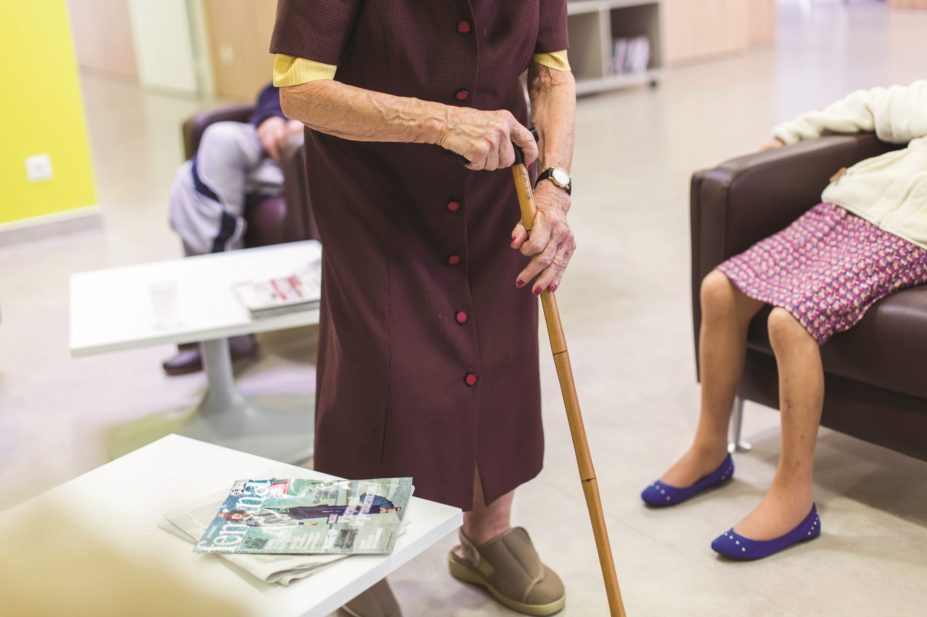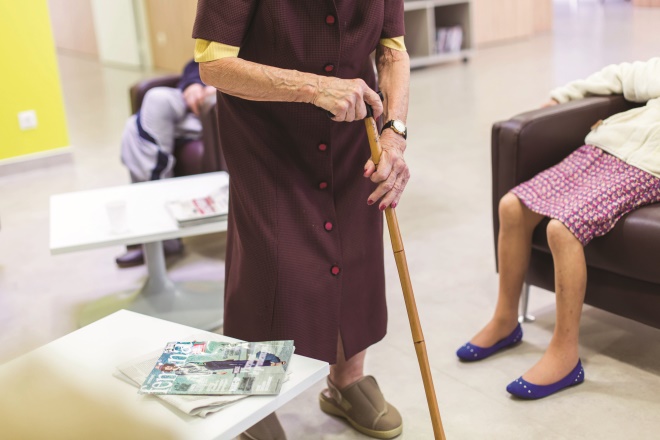
Alamy Stock Photo
Open access article
The Royal Pharmaceutical Society has made this article free to access in order to help healthcare professionals stay informed about an issue of national importance.
To learn more about coronavirus, please visit: https://www.rpharms.com/resources/pharmacy-guides/wuhan-novel-coronavirus

Source: Phanie / Alamy Stock Photo
Pharmacists have expressed concern about the reduction in pharmacist presence in care homes
Pharmacy staff in care homes are being redeployed to cover other roles during the COVID-19 pandemic, even though the demands on care homes are increasing rapidly, The Pharmaceutical Journal has learnt.
Care home pharmacists in some areas of England say they are being asked to carry out work in hospitals and help with electronic prescribing, even though deaths have doubled in care homes and many are struggling to cope with staff absences.
Office for National Statistics (ONS) figures released on 21 April 2020 reported that in week 15 of this year — the week ending 10 April 2020 — 16.8% (826 deaths) of all deaths occurring in care homes involved COVID-19.
ONS data also show that the number of deaths in care homes doubled between week 11 — when the first deaths from COVID-19 were registered in the UK — and week 15.
Some pharmacists have expressed concern that the reduction in pharmacist presence in care homes will result in delays in supplying appropriate medication to relieve symptoms at the end of life.
Graham Stretch, chief pharmacist at the Argyle Health Group across London and clinical director of Brentworth Primary Care Network, told The Pharmaceutical Journal that “multiple contacts” had reported cases of medicines optimisation in care homes (MOCH) pharmacy teams being moved to carry out other work, including electronic repeat dispensing.
The practice is “widespread”, he added, saying that this would mean reduced support for carers and nurses in care homes, and GPs, who may be less familiar with end-of-life medication.
“These vulnerable patients need all the support we can give them; it is these patients’ hour of need,” Stretch said.
“We need to provide a satisfactory level of care at the end of their lives and that requires input from all members of the multidisciplinary team. Vital to this effort is the pharmacy team.”
Stretch — who is also president of the Primary Care Pharmacy Association — said that more than 100 care home residents had died from COVID-19 in his area (Ealing, west London) in the past six weeks. The Argyle Health Group has around 900 care home residents on its books, in total.
Stretch said that in one care home under his group’s service area, 25 residents had died. 19 residents died in another care home, and a third care home had lost 13 residents. Nine residents had died on 21 April 2020, the day he spoke to The Pharmaceutical Journal.
Eleesha Pentiah, a pharmacist within a clinical commissioning group care home pharmacy team in NHS East and North Hertfordshire, told The Pharmaceutical Journal that she had been moved to a different site to work as part of a multidisciplinary team attempting to minimise hospital admissions, and said she was aware of pharmacists being redeployed to other NHS organisations.
She added that care home pharmacy teams had “been moving heaven and earth to support our homes, upskill the care home staff and keep [older] residents safe and healthy”. It had, she said, ”been really pleasing to see pharmacists working together across organisations for the benefit of patients”.
Carmel Copeland, a care home pharmacist with Northumbria Healthcare NHS Trust, works as part of an integrated team and said she had “inevitably found myself covering acute wards in hospital when needed due to staff illness/isolating”
However, she said that her team had managed to maintain many elements of the care home service — including following up hospital discharges, review of new residents, and medicines queries.
Pentiah added that her team is “working in different ways: exploring how to do remote video consultations with staff and residents, supporting with medicines ordering and helping practice staff, online video medicines reviews — all works in progress”.
Stretch also highlighted “very significant” staff absence in the care home sector: at one point, he said, one home in his area, with 80 residents, had experienced an 80% staff absence rate.
In a statement published on 21 April 2020, the National Care Forum (NCF), which represents not-for-profit organisations in the care sector, said that just 25% of eligible care home staff have been tested for COVID-19 to date, and said that “access to testing centres is a key issue”.
A spokesperson for the NCF told The Pharmaceutical Journal that existing set-ups, such as drive-through testing and home testing, were not sufficient. “We require in the community or care setting tests to be available now. Our colleagues do not have time or the access to vehicles to drive to the allocated testing locations.”


